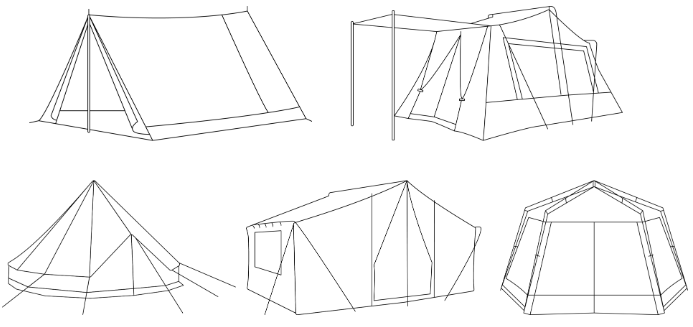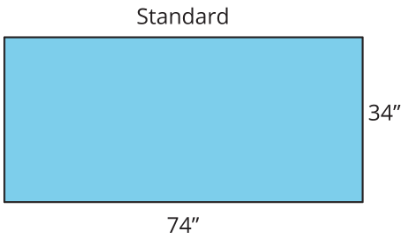8.1: Designing a Tent
( \newcommand{\kernel}{\mathrm{null}\,}\)
Lesson
Let's design some tents.
Exercise 8.1.1: Tent Design - Part 1
Have you ever been camping?
You might know that sleeping bags are all about the same size, but tents come in a variety of shapes and sizes.
Your task is to design a tent to accommodate up to four people, and estimate the amount of fabric needed to make your tent. Your design and estimate must be based on the information given and have mathematical justification.
First, look at these examples of tents, the average specifications of a camping tent, and standard sleeping bag measurements. Talk to a partner about:
- Similarities and differences among the tents
- Information that will be important in your designing process
- The pros and cons of the various designs
Tent Styles

Tent Height Specifications
| height description | height of tent | notes |
|---|---|---|
| sitting height | 3 feet | Campers are able to sit, lie, or crawl inside tent. |
| kneeling height | 4 feet | Campers are able to kneel inside tent. Found mainly in 3–4 person tents. |
| stooping height | 5 feet | Campers are able to move around on their feet inside tent, but most campers will not be able to stand upright. |
| standing height | 6 feet | Most adult campers are able to stand upright inside tent. |
| roaming height | 7 feet | Adult campers are able to stand upright and walk around inside tent. |
Sleeping Bag Measurements

- Create and sketch your tent design. The tent must include a floor.
- What decisions were important when choosing your tent design?
- How much fabric do you estimate will be necessary to make your tent? Show your reasoning and provide mathematical justification.
Exercise 8.1.2: Tent Design - Part 2
- Explain your tent design and fabric estimate to your partner or partners. Be sure to explain why you chose this design and how you found your fabric estimate.
- Compare the estimated fabric necessary for each tent in your group. Discuss the following questions:
- Which tent design used the least fabric? Why?
- Which tent design used the most fabric? Why?
- Which change in design most impacted the amount of fabric needed for the tent? Why?


